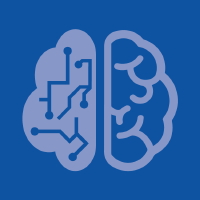Topic Menu
► Topic MenuTopic Editors


Application of Big Data and Deep Learning in Engineering Analysis and Design
Topic Information
Dear Colleagues,
With the rapid growth in the Internet of Things (IoT), data collection has become a routine procedure. Big data refer to a large and complex set of structured, semi-structured, and unstructured data that are collected and can be mined for information, used in advanced data analytics, and applied to machine and deep learning to develop predictive models. When big data generated from wide sensor networks with remarkable sampling rates are employed to monitor large systems, real-time and adaptive filtering is essential to ensure functionality.
Some common characteristics for big data are validity, value, variety, variability, velocity, veracity, visualization, volatility, and volume. These 9V characteristics have been extensively studied, and various heuristic approaches and numerical techniques have been proposed to collect, store, manage, process. and access these data, as well as to apply them to solve real-world engineering problems.
This Topic seeks papers that address general subject areas related to any of these 9Vs, as well as big data and machine/deep learning, scalability and fault tolerance, parallel data processing, cloud storage and computing, graph databases and processing, data pattern recognition, advanced biometrics, biomimetics, systems diagnostics and prognostics, anomaly detection, noise and fake data identification, dimensional reduction, training and inference methods, neural machine translation (NMT), context-sensitive and generative based conversational systems, explainable artificial intelligence, system data integration (e.g., for fleet management), etc.
Additional topics of interest include but are not limited to:
- Artificial intelligence;
- Cluster analysis;
- Efficient storage, access, and transfer;
- Image-based applications;
- Information mining and classification;
- Machine vision;
- Population-based optimization;
- Quantum computing for big data analytics;
- Real-time big data adoption and analytics ;
- Security and privacy;
- Sentiment analysis;
- Uncertainty modeling;
- Voice recognition and classification.
Dr. Eric M. Lui
Dr. Antonio Concilio
Topic Editors
Participating Journals
| Journal Name | Impact Factor | CiteScore | Launched Year | First Decision (median) | APC |
|---|---|---|---|---|---|

Applied Sciences
|
2.5 | 5.3 | 2011 | 18.4 Days | CHF 2400 |

Automation
|
- | 2.9 | 2020 | 24.1 Days | CHF 1000 |

Big Data and Cognitive Computing
|
3.7 | 7.1 | 2017 | 25.3 Days | CHF 1800 |

Biomimetics
|
3.4 | 3.5 | 2016 | 19.5 Days | CHF 2200 |

Designs
|
- | 3.9 | 2017 | 21.7 Days | CHF 1600 |

Sensors
|
3.4 | 7.3 | 2001 | 18.6 Days | CHF 2600 |

MDPI Topics is cooperating with Preprints.org and has built a direct connection between MDPI journals and Preprints.org. Authors are encouraged to enjoy the benefits by posting a preprint at Preprints.org prior to publication:
- Immediately share your ideas ahead of publication and establish your research priority;
- Protect your idea from being stolen with this time-stamped preprint article;
- Enhance the exposure and impact of your research;
- Receive feedback from your peers in advance;
- Have it indexed in Web of Science (Preprint Citation Index), Google Scholar, Crossref, SHARE, PrePubMed, Scilit and Europe PMC.

